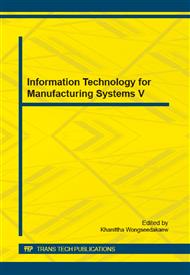p.359
p.363
p.371
p.377
p.381
p.388
p.397
p.402
p.407
Research on General Permutation Encryption Module Based on Chaos Theory
Abstract:
Replacement and substitution encryption are two basic types of encryption historically. The classical encryption algorithm has been compromised now, but they still can play special role for modern cryptology. For example, in digital image encryption system, substitution can disrupt the original order of the images and eliminate the correlation of image information which not only can realize security of images, but also can resist intentional attack and destruction of clipping and noise. And transposition transformation is introduced into the design of block ciphers. The substitution has the feature of high efficiency and resistance, which makes it meet the specific requirements of encryption. So substitution cypher can be applied to modern encryption system.
Info:
Periodical:
Pages:
381-387
Citation:
Online since:
October 2014
Authors:
Keywords:
Price:
Сopyright:
© 2014 Trans Tech Publications Ltd. All Rights Reserved
Share:
Citation:


